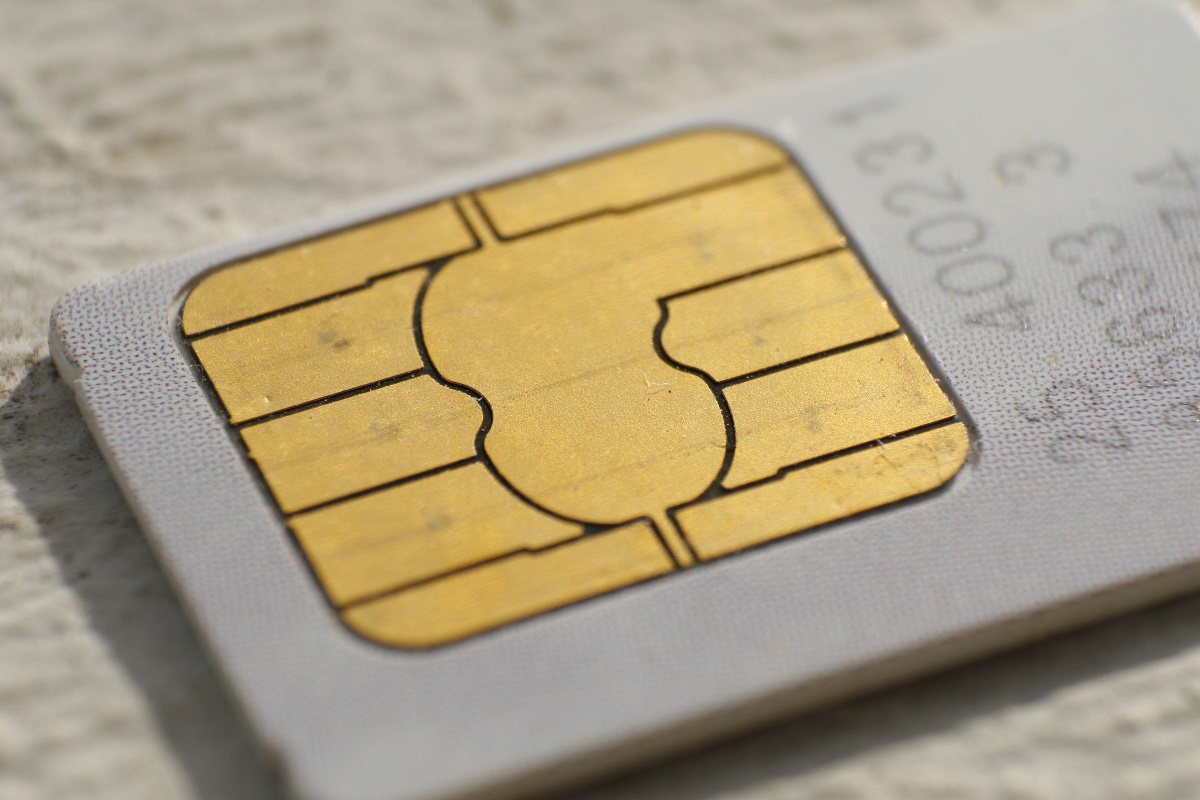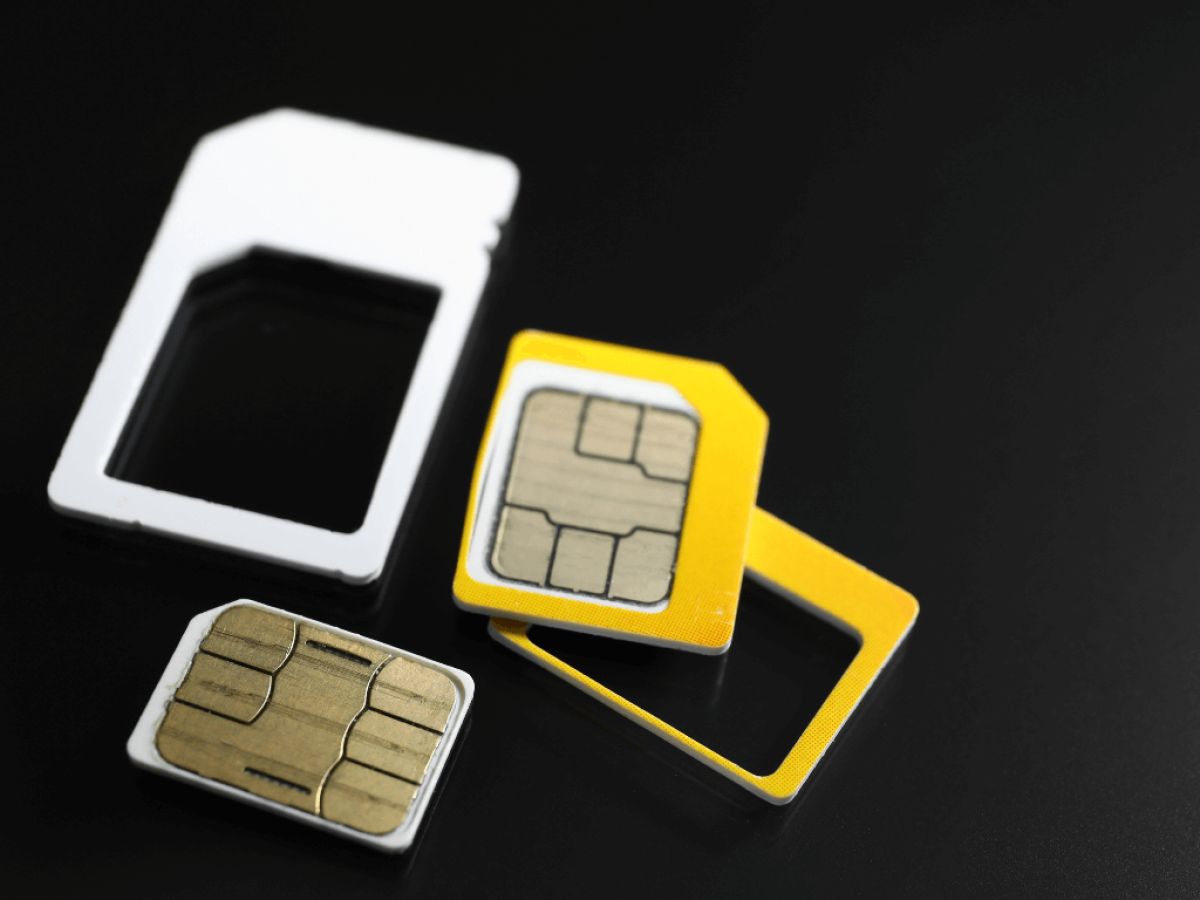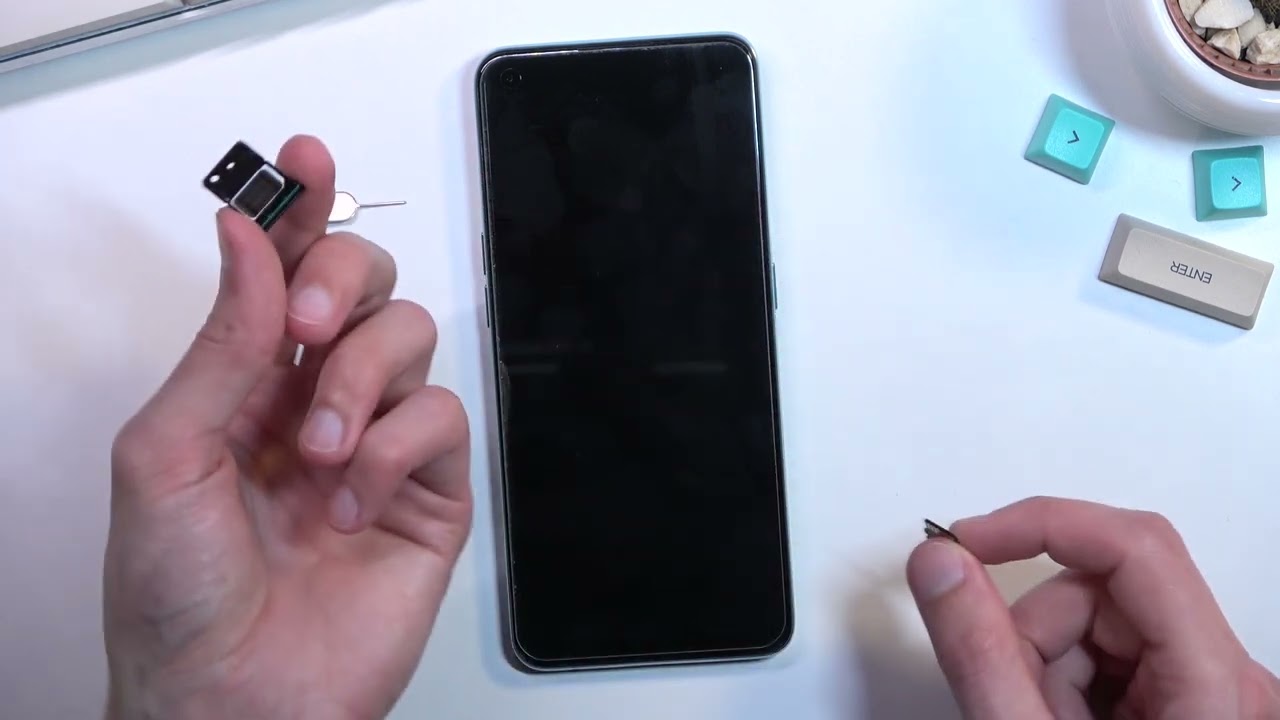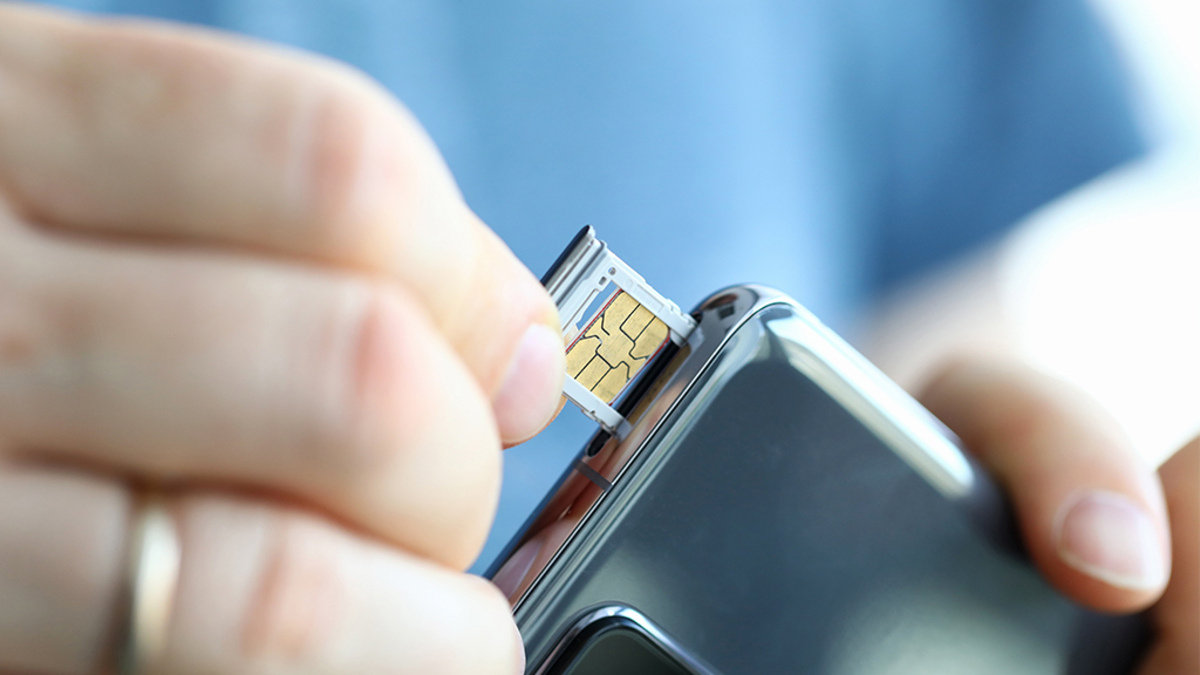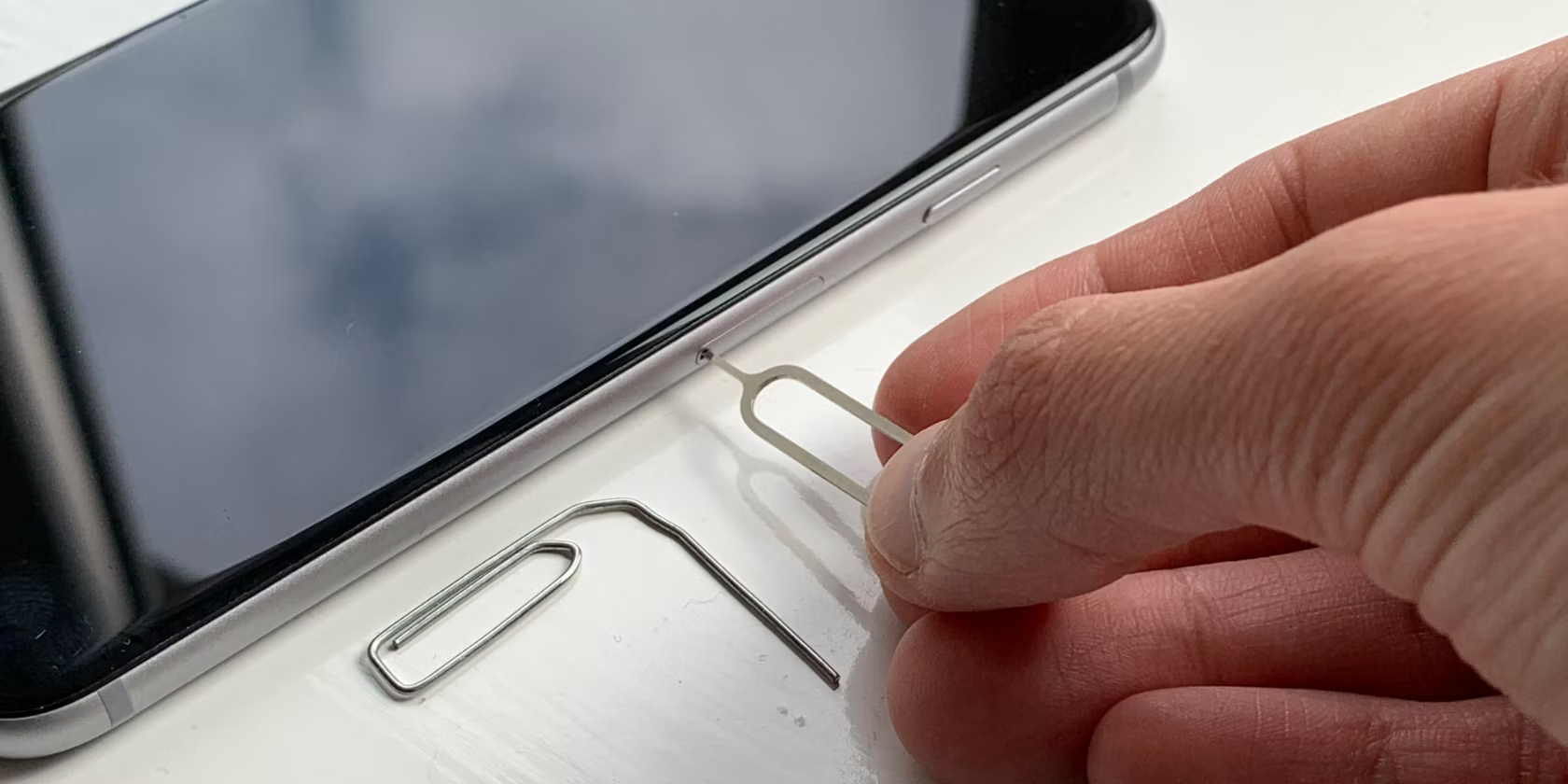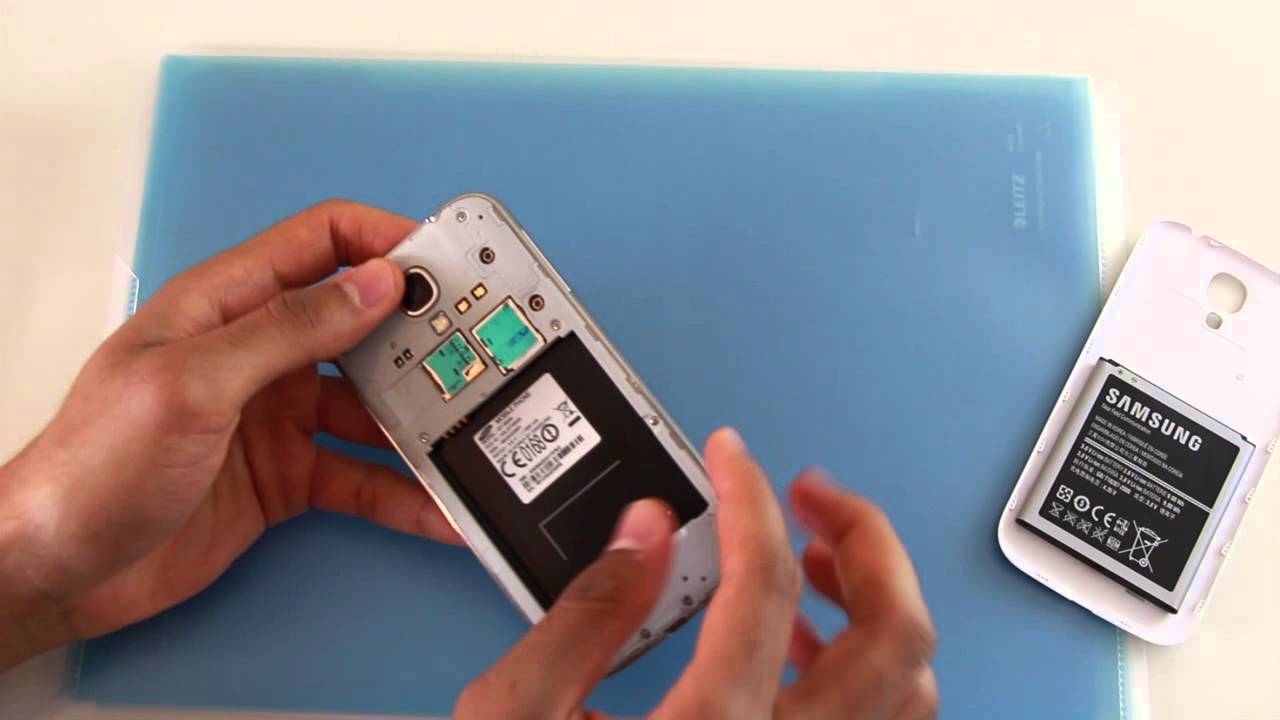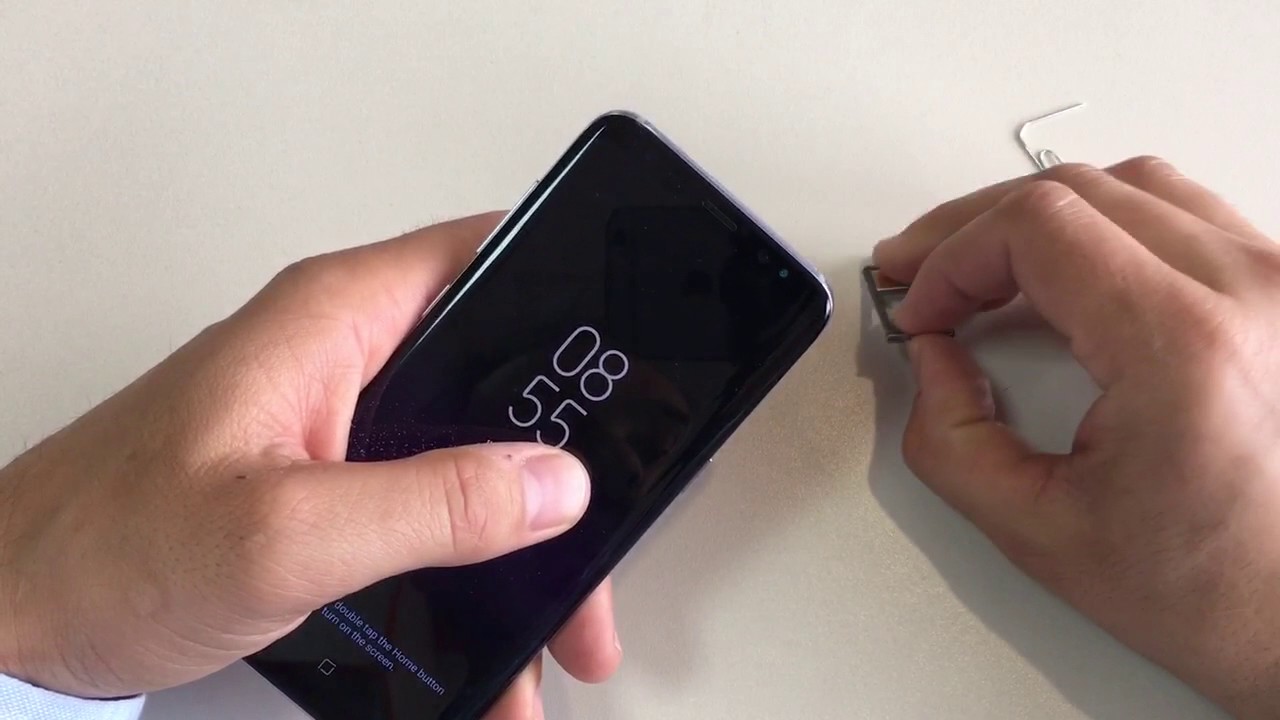Introduction
The Subscriber Identity Module (SIM) card is a small but crucial component of mobile devices, serving as the key to connectivity in the digital world. It holds vital information such as the user's identity, contacts, and network authorization, making it an indispensable part of modern communication. However, despite its significance, SIM cards are susceptible to various forms of damage that can disrupt their functionality and compromise the user's connectivity.
Understanding the common causes of SIM card damage and adopting preventive measures is essential for ensuring the seamless operation of mobile devices. By taking proactive steps to safeguard SIM cards, users can avoid the inconvenience and potential data loss associated with damaged cards.
In the following sections, we will delve into the common causes of SIM card damage, including physical harm, exposure to extreme temperatures, water damage, and improper handling. Additionally, we will explore effective preventive measures that can help users protect their SIM cards from potential harm. By implementing these preventive strategies, mobile device users can mitigate the risk of SIM card damage and maintain uninterrupted access to essential communication services.
The importance of safeguarding SIM cards cannot be overstated, as they play a pivotal role in enabling seamless communication and connectivity. With this in mind, let's explore the common causes of SIM card damage and the proactive steps that can be taken to prevent such issues, ensuring that mobile devices continue to function optimally.
Now, let's delve into the specific causes of SIM card damage and the preventive measures that can be implemented to preserve the integrity of these vital components.
Common Causes of SIM Card Damage
SIM card damage can occur due to various factors, ranging from physical mishandling to environmental exposure. Understanding these common causes is crucial for taking proactive measures to safeguard the integrity of SIM cards. Below are the primary factors that can lead to SIM card damage:
1. Physical Damage
Physical damage is a leading cause of SIM card malfunction. This can occur when the SIM card is improperly inserted or removed from the device's SIM tray, leading to scratches or bending of the delicate metal contacts on the card. Additionally, mishandling or accidental drops can result in cracks or breakage, rendering the SIM card inoperable.
2. Exposure to Extreme Temperatures
Extreme temperatures, both hot and cold, can adversely affect the functionality of a SIM card. Prolonged exposure to high temperatures, such as leaving the device in a parked car on a hot day, can cause the SIM card to warp or the internal components to degrade. Similarly, exposing the SIM card to freezing temperatures can lead to structural damage, impacting its ability to establish a reliable connection with the mobile network.
3. Water Damage
Water is a common nemesis for electronic devices, including SIM cards. Accidental exposure to moisture or immersion in water can lead to corrosion of the SIM card's internal circuitry, resulting in irreversible damage. Even minimal exposure to humidity can compromise the card's performance over time, making it susceptible to malfunctions.
4. Improper Handling
Improper handling of SIM cards, such as forcefully inserting or removing them from the device, can cause misalignment of the contacts and damage to the card's surface. Additionally, storing SIM cards in overcrowded wallets or pockets alongside sharp objects can lead to scratches or abrasions, impairing their functionality.
Understanding these common causes of SIM card damage is essential for users to recognize potential risks and take proactive measures to prevent such issues. By addressing these factors, individuals can mitigate the risk of SIM card damage and ensure the continued reliability of their mobile devices.
Physical Damage
Physical damage is a prevalent cause of SIM card malfunction and can result from various forms of mishandling. When a SIM card is improperly inserted or removed from the device's SIM tray, the delicate metal contacts on the card are susceptible to scratches or bending. This can occur when users apply excessive force during the insertion or removal process, leading to damage that compromises the card's functionality. Additionally, accidental drops or impacts can result in cracks or breakage, rendering the SIM card inoperable.
The delicate nature of SIM cards makes them vulnerable to physical damage, and users must exercise caution when handling these small yet essential components. Proper insertion and removal procedures should be followed to minimize the risk of damaging the metal contacts. When inserting a SIM card into a device, gentle and steady pressure should be applied to ensure a secure fit without causing any bending or misalignment of the contacts. Similarly, when removing the SIM card, a careful and controlled approach is necessary to prevent any undue stress on the card.
Furthermore, storing SIM cards in a safe and secure location when not in use can help protect them from potential physical damage. Avoiding overcrowded wallets or pockets where sharp objects may come into contact with the card is crucial. By taking these preventive measures, users can significantly reduce the likelihood of physical damage to their SIM cards, thereby ensuring their continued reliability.
In the event of physical damage to a SIM card, it is essential to refrain from attempting to use the damaged card, as this may exacerbate the issue and lead to further complications. Instead, users should seek a replacement SIM card from their mobile service provider to restore uninterrupted connectivity.
By being mindful of the potential for physical damage and adopting careful handling practices, mobile device users can safeguard their SIM cards from harm, ensuring that these essential components continue to facilitate seamless communication and connectivity.
Exposure to Extreme Temperatures
Exposure to extreme temperatures poses a significant risk to the integrity and functionality of SIM cards. Both hot and cold temperatures can exert detrimental effects on these small yet vital components, potentially leading to operational issues and connectivity disruptions. Understanding the impact of extreme temperatures on SIM cards is crucial for users to implement effective preventive measures and safeguard their cards from potential damage.
Prolonged exposure to high temperatures can have adverse effects on SIM cards. For instance, leaving a mobile device with the SIM card inside in a parked car on a scorching hot day can subject the card to excessive heat, causing it to warp or the internal components to degrade. The plastic housing of the SIM card can become distorted under high temperatures, leading to misalignment of internal elements and compromising the card's structural integrity. Additionally, the heat can accelerate the aging of electronic components, potentially resulting in performance degradation and connectivity issues.
On the other hand, exposure to freezing temperatures can also jeopardize the functionality of SIM cards. When subjected to extreme cold, the materials within the SIM card can become brittle, increasing the risk of structural damage. The expansion and contraction of materials due to temperature fluctuations can lead to microcracks or delamination within the card, impairing its ability to establish a reliable connection with the mobile network.
To mitigate the risks associated with extreme temperatures, users should be mindful of where their mobile devices are stored. Avoiding leaving devices in environments with high temperatures, such as parked cars under direct sunlight, can help prevent heat-related damage to SIM cards. Similarly, in cold climates, ensuring that devices are adequately insulated and protected from freezing temperatures can safeguard the integrity of SIM cards.
Furthermore, utilizing protective accessories, such as insulated phone cases or SIM card holders, can provide an additional layer of defense against temperature extremes. These accessories help shield the SIM card from direct exposure to harsh environmental conditions, reducing the likelihood of temperature-induced damage.
By adopting these preventive measures and remaining mindful of the impact of extreme temperatures, mobile device users can effectively protect their SIM cards from potential harm, ensuring uninterrupted connectivity and optimal performance, regardless of environmental conditions.
Water Damage
Water damage poses a significant threat to the functionality and reliability of SIM cards, making it crucial for mobile device users to recognize the potential risks and take proactive measures to safeguard these essential components. Accidental exposure to moisture or immersion in water can have detrimental effects on SIM cards, leading to corrosion and irreversible damage to their internal circuitry. Even minimal exposure to humidity over time can compromise the card's performance, making it susceptible to malfunctions.
The delicate nature of SIM cards renders them highly vulnerable to water damage. When exposed to moisture, the metal contacts and internal components of the card are at risk of corrosion, which can impede their ability to establish a reliable connection with the mobile network. Additionally, water exposure can compromise the structural integrity of the SIM card, leading to malfunctions and potential data loss.
Preventing water damage to SIM cards requires a proactive approach to safeguarding these vital components. One effective measure is to avoid exposing SIM cards to environments where moisture levels are high. For instance, keeping mobile devices away from areas prone to water splashes, such as kitchens and bathrooms, can significantly reduce the risk of accidental water exposure. Furthermore, ensuring that devices are securely protected from rain or water ingress during outdoor activities is essential for safeguarding SIM cards from potential damage.
In addition to environmental precautions, utilizing protective accessories can further mitigate the risk of water damage. Waterproof phone cases or pouches provide an extra layer of defense, shielding both the device and the SIM card from water exposure. These accessories are particularly valuable for individuals who engage in outdoor pursuits or activities where the risk of water exposure is heightened.
Moreover, in the event of accidental water exposure, swift action is crucial to minimize the potential damage to the SIM card. Immediately powering off the device, removing the SIM card, and gently drying it with a soft cloth can help mitigate the effects of water exposure. It is important to refrain from using heat sources, such as hairdryers or microwaves, as excessive heat can further damage the card. Once dried, the SIM card should be carefully reinserted into the device, and its functionality should be assessed to ensure that it remains operational.
By adhering to these preventive measures and remaining vigilant about the risk of water damage, mobile device users can effectively protect their SIM cards from potential harm, ensuring uninterrupted connectivity and preserving the integrity of these indispensable components.
Improper Handling
Improper handling of SIM cards can lead to a range of issues that compromise their functionality and reliability. This includes forcefully inserting or removing the SIM card from the device, which can result in misalignment of the contacts and damage to the card's surface. Additionally, storing SIM cards in overcrowded wallets or pockets alongside sharp objects can lead to scratches or abrasions, impairing their performance.
To mitigate the risks associated with improper handling, users should adhere to proper insertion and removal procedures when dealing with SIM cards. Gentle and controlled pressure should be applied when inserting the SIM card into a device's SIM tray to avoid bending or misaligning the delicate metal contacts. Similarly, when removing the SIM card, a cautious approach is necessary to prevent any damage to the card.
Storing SIM cards in a safe and secure location when not in use is essential to protect them from potential damage. Avoiding overcrowded wallets or pockets where sharp objects may come into contact with the card is crucial. By adopting these preventive measures, users can significantly reduce the likelihood of improper handling leading to damage of their SIM cards, thereby ensuring their continued reliability.
In the event of improper handling leading to damage of a SIM card, it is important to refrain from attempting to use the damaged card, as this may exacerbate the issue and lead to further complications. Instead, users should seek a replacement SIM card from their mobile service provider to restore uninterrupted connectivity.
By being mindful of the potential for improper handling and adopting careful handling practices, mobile device users can safeguard their SIM cards from harm, ensuring that these essential components continue to facilitate seamless communication and connectivity.
Prevention of SIM Card Damage
Safeguarding SIM cards from potential damage is paramount for ensuring uninterrupted connectivity and preserving the integrity of these essential components. By implementing effective preventive measures, mobile device users can mitigate the risks associated with SIM card damage and maintain optimal functionality. The following proactive strategies can help protect SIM cards from various forms of harm:
Use a SIM Card Case
Utilizing a dedicated SIM card case provides a secure and protective storage solution for SIM cards when they are not in use. These cases are designed to shield SIM cards from physical damage and environmental factors, such as moisture and temperature extremes. By storing SIM cards in dedicated cases, users can minimize the risk of scratches, bending, or accidental exposure to damaging elements.
Keep SIM Card Away from Water and Extreme Temperatures
Preventing exposure to water and extreme temperatures is crucial for safeguarding SIM cards. Users should exercise caution to keep their mobile devices and SIM cards away from environments where moisture levels are high, such as kitchens, bathrooms, or outdoor areas prone to water splashes. Additionally, avoiding prolonged exposure to extreme heat or cold, such as leaving devices in parked cars or exposing them to direct sunlight, can help protect SIM cards from temperature-induced damage.
Handle SIM Card with Care
Adhering to proper handling practices is essential for preventing physical damage to SIM cards. Users should exercise caution when inserting and removing SIM cards from devices, applying gentle and controlled pressure to avoid misalignment or bending of the delicate metal contacts. Storing SIM cards in a safe and secure location, away from sharp objects or overcrowded wallets, can further reduce the risk of physical damage.
Regularly Back Up SIM Card Data
Regularly backing up the data stored on SIM cards is a proactive measure to mitigate the potential impact of SIM card damage. By maintaining up-to-date backups of contacts and essential information, users can minimize the risk of data loss in the event of SIM card malfunction or damage. This precautionary step ensures that vital data remains accessible, even in the event of unforeseen issues with the SIM card.
By incorporating these preventive measures into their mobile device management practices, users can effectively protect their SIM cards from potential damage, ensuring continued connectivity and optimal performance. Taking proactive steps to safeguard SIM cards is essential for preserving the seamless operation of mobile devices and maintaining uninterrupted access to essential communication services.
Use a SIM Card Case
Utilizing a dedicated SIM card case provides a secure and protective storage solution for SIM cards when they are not in use. These compact and purpose-built cases are designed to safeguard SIM cards from a range of potential hazards, including physical damage and environmental factors such as moisture and temperature extremes.
A SIM card case serves as a protective enclosure, shielding the delicate components of the SIM card from external impact and friction. The compact dimensions of the case ensure a snug fit for the SIM card, preventing unnecessary movement and minimizing the risk of scratches or bending. This is particularly beneficial when carrying spare or unused SIM cards, as it reduces the likelihood of accidental damage during storage or transport.
Furthermore, the material composition of SIM card cases often includes durable and resilient elements that provide an additional layer of defense. Some cases feature shock-absorbing properties, offering protection against accidental drops or impacts that could otherwise compromise the integrity of the SIM card. Additionally, the protective casing acts as a barrier against dust and debris, safeguarding the SIM card from potential contaminants that may affect its performance.
In addition to physical protection, SIM card cases are designed to mitigate the risk of exposure to damaging environmental factors. Many cases incorporate moisture-resistant features, such as sealing gaskets or water-repellent materials, to shield the enclosed SIM card from accidental water exposure. This is particularly advantageous for individuals who frequently engage in outdoor activities or travel to regions where the risk of moisture-related damage is heightened.
Moreover, the compact and portable nature of SIM card cases makes them an ideal accessory for users who frequently switch between SIM cards or require secure storage for spare cards. The convenience of having a dedicated case for each SIM card ensures that they remain organized and well-protected, minimizing the potential for damage or misplacement.
By incorporating a SIM card case into their mobile device management practices, users can effectively safeguard their SIM cards from a range of potential hazards, ensuring that these essential components remain in optimal condition. The utilization of dedicated cases not only enhances the physical protection of SIM cards but also provides peace of mind, knowing that these vital components are securely stored and shielded from environmental threats.
Keep SIM Card Away from Water and Extreme Temperatures
Preventing exposure to water and extreme temperatures is crucial for safeguarding the integrity and functionality of SIM cards. These small yet vital components are susceptible to damage when subjected to moisture or temperature extremes, making it essential for mobile device users to adopt proactive measures to protect their SIM cards.
Water poses a significant threat to SIM cards, as even minimal exposure to moisture can lead to corrosion and irreversible damage to the internal circuitry. Accidental immersion in water or exposure to high humidity levels can compromise the structural integrity of the SIM card, potentially resulting in malfunctions and connectivity issues. To mitigate the risk of water damage, users should exercise caution to keep their mobile devices and SIM cards away from environments where moisture levels are high. This includes avoiding placing devices near sources of water, such as sinks, bathtubs, or areas prone to water splashes. Additionally, protecting devices from exposure to rain or moisture during outdoor activities is essential for safeguarding SIM cards from potential damage.
In addition to water damage, extreme temperatures can adversely affect the functionality of SIM cards. Prolonged exposure to high temperatures, such as leaving devices in parked cars under direct sunlight, can cause the SIM card to warp or the internal components to degrade. Similarly, exposure to freezing temperatures can lead to structural damage, impacting the card's ability to establish a reliable connection with the mobile network. To mitigate the risks associated with temperature extremes, users should be mindful of where their mobile devices are stored. Avoiding leaving devices in environments with high temperatures, such as parked cars under direct sunlight, can help prevent heat-related damage to SIM cards. Similarly, in cold climates, ensuring that devices are adequately insulated and protected from freezing temperatures can safeguard the integrity of SIM cards.
Furthermore, utilizing protective accessories, such as insulated phone cases or SIM card holders, can provide an additional layer of defense against temperature extremes. These accessories help shield the SIM card from direct exposure to harsh environmental conditions, reducing the likelihood of temperature-induced damage.
By remaining vigilant about the risks of water and temperature-related damage, mobile device users can effectively protect their SIM cards, ensuring uninterrupted connectivity and optimal performance regardless of environmental conditions.
Handle SIM Card with Care
Handling a SIM card with care is essential to ensure its optimal functionality and longevity. The delicate nature of SIM cards necessitates a cautious approach when inserting, removing, and storing these vital components. By adhering to proper handling practices, users can minimize the risk of damage and maintain the integrity of their SIM cards.
When inserting or removing a SIM card from a mobile device, it is crucial to exercise gentle and controlled pressure. Applying excessive force during these processes can lead to misalignment of the metal contacts or physical damage to the card. Users should carefully follow the device manufacturer's guidelines for inserting and removing SIM cards to prevent any undue stress on the delicate components.
Storing SIM cards in a safe and secure location when not in use is equally important. Avoiding overcrowded wallets or pockets where sharp objects may come into contact with the card can prevent scratches or abrasions. Furthermore, using dedicated SIM card holders or cases provides an added layer of protection, shielding the card from physical damage and environmental factors.
Proper handling also extends to the cleaning and maintenance of SIM cards. If the card becomes dirty or smudged, it should be gently wiped with a soft, dry cloth to remove any contaminants. It is crucial to avoid using harsh chemicals or abrasive materials, as these can damage the card's surface and compromise its functionality.
Additionally, users should refrain from bending or flexing the SIM card, as this can lead to permanent damage to the internal components. The card should be handled with care and stored flat to prevent any warping or structural deformation.
In the event of a SIM card being removed from a device, it should be promptly placed in a secure location to prevent loss or damage. Placing the card on a flat and stable surface reduces the risk of accidental bending or exposure to damaging elements.
By incorporating these careful handling practices into their mobile device management routines, users can effectively protect their SIM cards from potential harm, ensuring continued connectivity and optimal performance. Practicing caution and mindfulness when handling SIM cards is instrumental in preserving these essential components and maintaining seamless communication and connectivity.
Regularly Back Up SIM Card Data
Regularly backing up the data stored on SIM cards is a proactive measure that can mitigate the potential impact of SIM card damage or malfunction. While SIM cards primarily store contact information and network authorization data, these details are invaluable to users, and the loss of such data can be disruptive. By maintaining up-to-date backups of the information stored on SIM cards, users can minimize the risk of data loss and ensure that vital contact details and network settings remain accessible, even in the event of SIM card issues.
Backing up SIM card data can be achieved through various methods, depending on the capabilities of the mobile device and the user's preferences. Many modern smartphones offer the functionality to export SIM card data to the device's internal storage or synchronize it with cloud-based services. These options provide convenient and secure means of creating backups that can be easily accessed and restored if necessary.
Regularly scheduled backups are essential to ensure that the stored data remains current and reflective of any recent changes or additions. Users should establish a routine for backing up their SIM card data, whether it involves manually exporting the information at regular intervals or leveraging automated backup features provided by the device's operating system or third-party applications.
In addition to safeguarding against potential SIM card damage, regular backups of SIM card data also serve as a precautionary measure in the event of device loss or replacement. By maintaining up-to-date backups, users can seamlessly transfer their SIM card information to a new device, minimizing the disruption to their communication and network settings.
Furthermore, maintaining backups of SIM card data enhances overall data security and resilience. In the event of unforeseen circumstances, such as accidental data deletion or device issues, having a recent backup ensures that critical contact information and network settings can be readily restored, preserving the user's connectivity and communication capabilities.
By incorporating regular SIM card data backups into their mobile device management practices, users can effectively mitigate the potential impact of SIM card-related issues, ensuring that essential data remains accessible and secure. This proactive approach to data management enhances the resilience of the user's communication infrastructure, providing peace of mind and continuity in the face of unforeseen challenges.
Conclusion
In conclusion, safeguarding SIM cards from potential damage is paramount for ensuring uninterrupted connectivity and preserving the integrity of these essential components. The common causes of SIM card damage, including physical harm, exposure to extreme temperatures, water damage, and improper handling, underscore the importance of adopting proactive measures to protect these vital components.
By understanding the vulnerabilities of SIM cards and implementing effective preventive strategies, mobile device users can mitigate the risks associated with SIM card damage. Utilizing dedicated SIM card cases, avoiding exposure to water and extreme temperatures, handling SIM cards with care, and regularly backing up SIM card data are instrumental in safeguarding these components.
The utilization of dedicated SIM card cases provides a secure and protective storage solution, shielding SIM cards from physical damage and environmental factors. Additionally, preventing exposure to water and extreme temperatures is crucial for safeguarding SIM cards, while handling SIM cards with care minimizes the risk of damage during insertion, removal, and storage. Regularly backing up SIM card data serves as a proactive measure to mitigate the potential impact of SIM card damage or malfunction, ensuring that vital contact details and network settings remain accessible.
By incorporating these preventive measures into their mobile device management practices, users can effectively protect their SIM cards from potential harm, ensuring continued connectivity and optimal performance. This proactive approach not only enhances the physical and environmental protection of SIM cards but also provides peace of mind, knowing that these vital components are securely stored and shielded from potential threats.
In essence, the proactive safeguarding of SIM cards is essential for maintaining seamless communication and connectivity. By recognizing the common causes of SIM card damage and taking proactive steps to prevent such issues, mobile device users can ensure the continued reliability and functionality of these indispensable components, ultimately enhancing their overall mobile experience.







